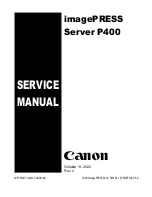
5 • Authentication
Model LRA2900A RAS Administrators’ Reference Guide
59
Static User Authentication
Accounting Address (auAcctAddress)
This is the IP address of the accounting server. RADIUS also allows for the recording of accounting informa-
tion.
Secondary Accounting Address (auSecondaryAcctAddress)
When using a remote accounting server (such as RADIUS Accounting) this variable provides the IP address of
the accounting server.
Accounting Port (auAcctPort)
This is the UDP port on the accounting server specified in Acct Address that the access server should use to
transfer accounting information. RFC 2139 states that port 1813 is the standard RADIUS accounting port.
Some older implementations of RADIUS use port 1646 as the accounting port.
Accounting Enable (auAccountingEnable)
This is a switch that allows the enabling or disabling the reporting of accounting information on the access
server. The following options are available:
•
enableAccounting—Begin accounting of RADIUS authenticated users.
•
disableAccounting—Disable the accounting feature.
•
enableAccounting-no validation—When a response is received from either the authentication or the
accounting server it is validated using the defined secret. If the secret does not match, the reply packet is
dropped just as if it never existed.
Early versions of the Livingston RADIUS server used a method for encoding the accounting reply packet
that was incorrect. Accounting replies from these servers would therefore be dropped because they could not
be authenticated, eventually resulting in timeouts and shutting the call down with the reason authenAccoun-
tingTimeout. As a workaround for this issue, the state enableAccountingNoValidation—which does not check
for valid encoding on the accounting reply packet—was added as an option.
Radius Packet Format (auRadiusPacketFormat)
The following options are available:
•
fullrfcPacket—The accept request packet includes Calling-Station-Id and Service-Type RADIUS attributes.
•
minimumrfcPacket—This setting does not include Calling-Station-Id and Service-Type RADIUS
attributes.
Static User Authentication
To view or modify the static users in the internal user database, click on
Authentication
in the
Configura-
tion Menu
. The
Authentication
window displays. Scroll down until
Static User Identification
is dis-
played (see figure 15).
Static users consist of usernames and passwords entered into the access server’s internal users database. You can
have up to 111 static users in the access server database.
You must have superuser-level access to make changes to the static users database.
The following sections describe each of the variables found in the
Static User Identification
section.
Summary of Contents for LRA 2900
Page 29: ...Contents Model LRA2900A RAS Administrators Reference Guide 29 ...
Page 33: ...About this guide Model LRA2900A RAS Administrators Reference Guide 33 ...
Page 63: ...5 Authentication Model LRA2900A RAS Administrators Reference Guide 63 Modify Static User ...
Page 72: ...72 Model LRA2900A RAS Administrators Reference Guide 7 Dial In ...
Page 201: ...16 MFR Version 2 Model LRA2900A RAS Administrators Reference Guide 201 ...
Page 211: ...16 MFR Version 2 Model LRA2900A RAS Administrators Reference Guide 211 MFR Version 2 Modify ...
Page 268: ...268 Chapter 22 About Chapter contents Introduction 269 Black Box contact information 269 ...
Page 273: ...23 License Model LRA2900A RAS Administrators Reference Guide 273 End User License Agreement ...
Page 278: ...278 Appendix B MIB trees Chapter contents Model LRA 2900 MIB Tree Structure 279 ...
















































